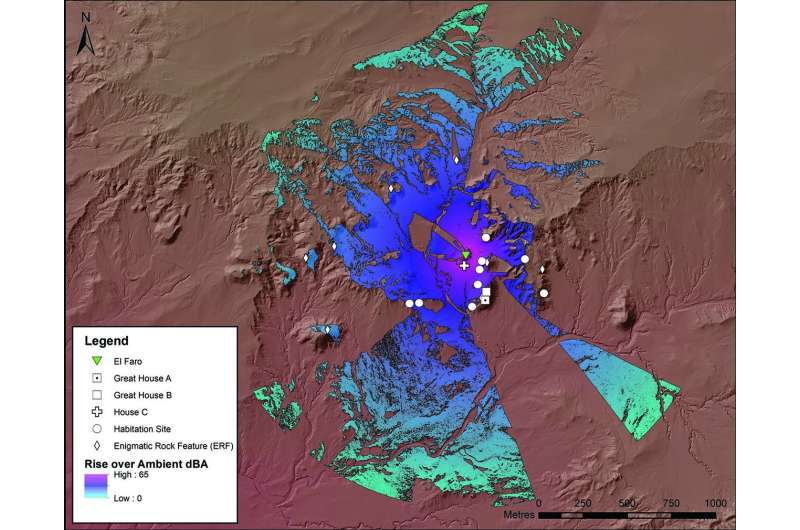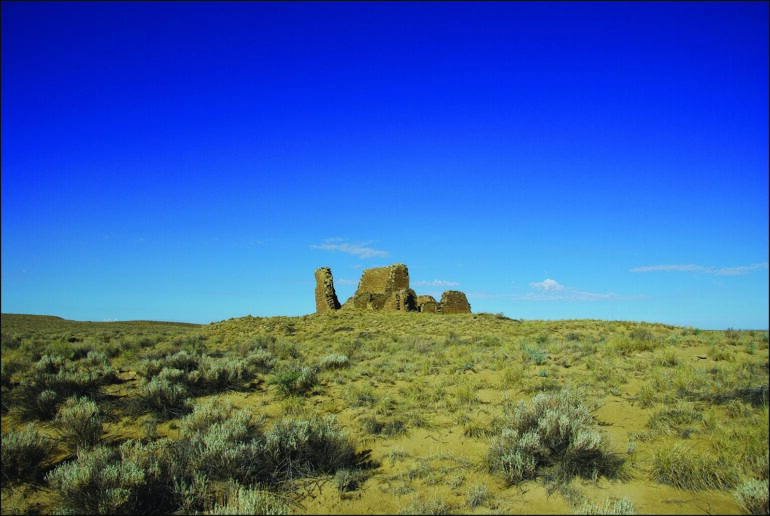Archaeologists have modeled the auditory range of conch-shell trumpets in the 9th–11th century US Southwest, proposing that the sound was key in the structuring of pre-Columbian Pueblo communities.
At the center of the ancient Pueblo world was Chaco Canyon in north-west New Mexico. The site was occupied from ~AD 850–1150 and surrounded by smaller Chacoan communities, each organized around a central great house.
Conch-shell trumpets have been found in burial contexts at Chaco Canyon, despite the nearest source of the shells being some 1,000km away. Today, these shells are used in contemporary Pueblo ritual practices, suggesting that they were also significant in ancient Chacoan society.
Previous studies indicate that sound was integral to ritual pageantry in Chaco Canyon. However, it was unknown whether communities beyond the canyon also placed significance on auditory experience.
“Chaco Canyon is surrounded by over one hundred understudied great house communities,” says lead author Professor Ruth Van Dyke from Binghamton University. “We sought to determine if extra-canyon great house communities demonstrated relationships similar to Chaco Canyon between landscape, community layout, and sound.”
To achieve this, Professor Van Dyke and a team of researchers from several US institutions used a Soundshed Analysis model developed by co-author K.E. Primeau to digitally model the sound of a conch-shell trumpet being sounded at a great house in relation to other features in the landscape. Their results are published in the journal Antiquity.

Modeled audible reach of a conch-shell blast at Pierre’s El Faro (LA 16514); one of the five communities. © the authors
Soundshed Analysis calculates the distance a sound can travel from a point, taking into account both the type of sound and environmental conditions such as elevation and ambient noise.
In this case, the team modeled the sound of a conch from great houses at five Chacoan communities to determine whether it would reach all habitation sites within the community.
They found that if somebody blew a conch-shell trumpet from the great house at the center of all five Chacoan communities, the sound would have reached almost all of the surrounding settlements.
This suggests that ancient Puebloans may have managed their land-use and community structures around the sound of trumpets. The sound was potentially used to signal communal activities, such as religious ceremonies.
“This is not unlike the idea of a medieval church bell calling a community to mass,” states Professor Van Dyke.
It also indicates how Chacoan heritage sites should be managed going forward.
“Soundscapes were meaningful dimensions of past experiences, landscapes, and environments and are important facets of social interaction in the ancient world,” observes Professor Van Dyke. “Management of archaeological and heritage sites should incorporate consideration of the auditory environment.”
More information:
Ruth M. Van Dyke et al, Seashells and sound waves: modelling soundscapes in Chacoan great-house communities, Antiquity (2024). DOI: 10.15184/aqy.2024.54
Citation:
Call of the conch: Archaeologists suggest Indigenous Americans used sound to organize local communities (2024, May 3)



